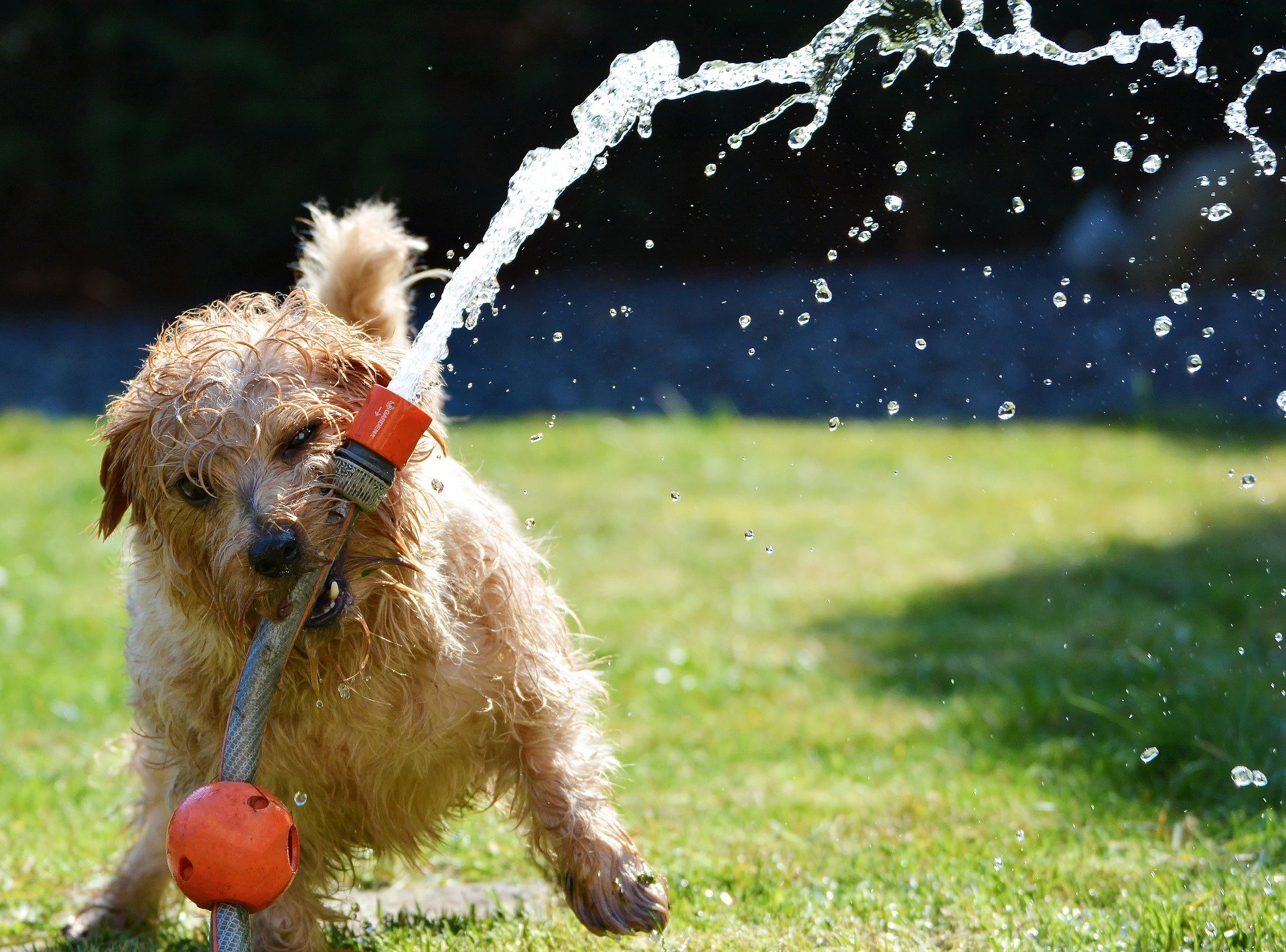Summer is upon us, and everyone is finally venturing back outside. Because our furry family members are always excited to go wherever we go, your instinct may be to bring them along. However, it can be easy to forget that dogs may have limitations when it comes to summer heat. Just like their owners, dogs can get overheated in the summer and without proper caution, the heat can turn deadly. But how do we know if it’s too hot outside for our dogs? It depends on the level of activity.
No matter what you decide to do, always have options for shade and water for your dog.
Going for a Walk
If you’ve ever run around barefoot outside, you know first hand how hot the road can get. Dogs walk around “barefoot” all the time, so it is important for their safety to make sure the ground is not too hot to walk on.
The light-colored pavement is going to be cooler than dark pavement simply because lighter colors reflect light – and thereby heat – while dark colors absorb it. If there are lots of light-colored sidewalks you can walk on, take that path. Regardless, it is good to check how hot the pavement is by doing the ten-second test. Take the back of your hand and put it on the ground. If you cannot comfortably hold it there for ten seconds or longer, it is too hot for your dog to walk on. Comfortably is the keyword- if by the end of the ten seconds you want to pick your hand up or are starting to get too hot, it’s a no-go for a walk that day. Walking on grass or dirt is almost always a safe bet- those surfaces hardly ever get too hot to walk on. Finding a small grassy area to walk around in, or taking your dog to a shady park to walk the trails is a good alternative when it’s too hot to walk around the neighborhood.
Heading out to the Water
Many dogs love going for a swim. This is a great way to spend the day when the thermometer won’t stop creeping upwards. Most beaches have restrictions when it comes to dogs being allowed, so keep an eye out for signs to avoid getting in trouble. (Have you been to the local dog beach?) Remember to check the temperature of the sand before taking your pup out as sand can also get hot enough to burn feet. Swimming might not be the best idea if your dog is prone to ear infections. If Fido just can’t stay out of the water, look for products that clean the ears and also have a drying agent. Because beaches are generally off limits, many people choose to take their dogs out on the boat. While this is a great way to include dogs in the fun, be sure to provide plenty of shade and drinking water, and keep an eye out for signs of distress caused by summer heat.
Going for a Ride
Car rides can be a great way to get outside even when it’s too hot to do much of anything. Your pup might love sticking her head out of a rolled-down window. However, under no circumstances should your dog be left unsupervised in a car. Even in the shade with the windows cracked, the temperature inside can reach dangerous levels in under ten minutes.
Risks Associated with Summer Heat
Familiarizing yourself with the symptoms of heat-stroke can mean the difference between life and death for your beloved pup on a hot day. Signs include:
- Excessive panting
- Difficulty breathing
- Agitation/restlessness
- Drooling
- Bright red tongue
- Pale gums
- Elevated heartrate
- Vomiting/diarrhea
Dogs that are obese, elderly, puppies, or brachycephalic (flat-faced) are at increased risk of heatstroke. If your dog exhibits these symptoms, take them to the vet immediately for emergency care.
Whether summer heat or winter chill, the experts at Gulf Coast K9 Dog Training are here to help your pets through the basics of obedience and training. Call us today for any behavioral problems you may be experiencing with your canine.





